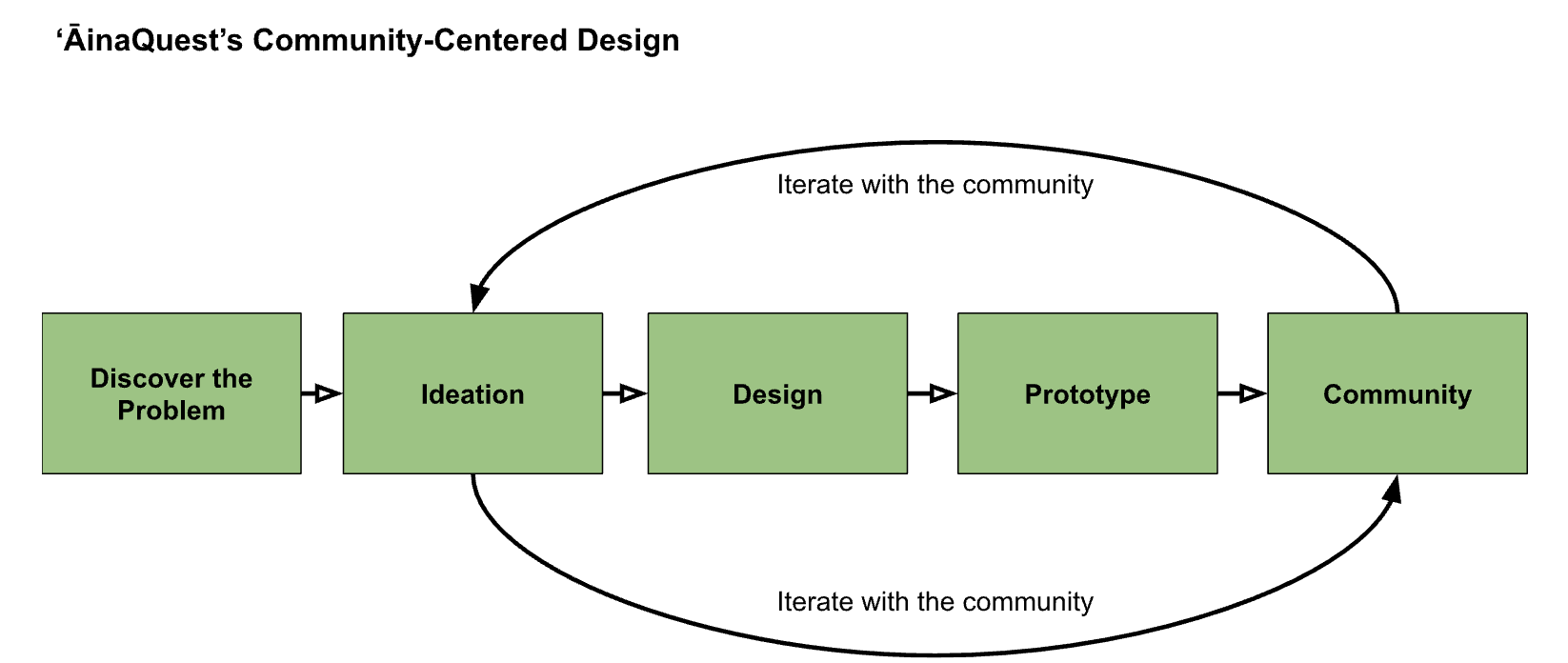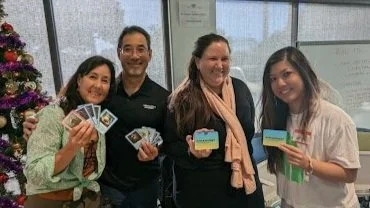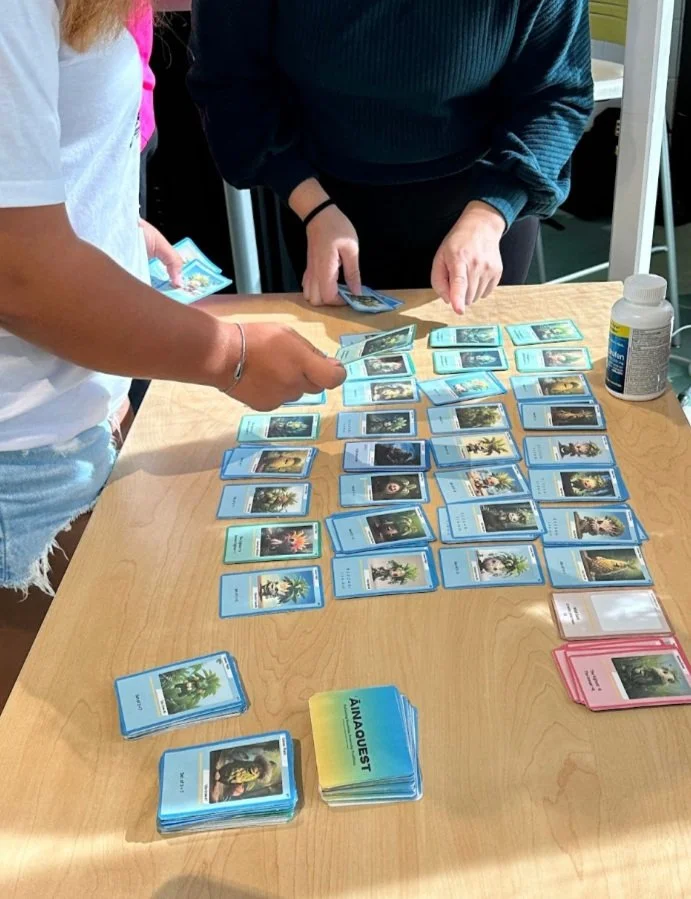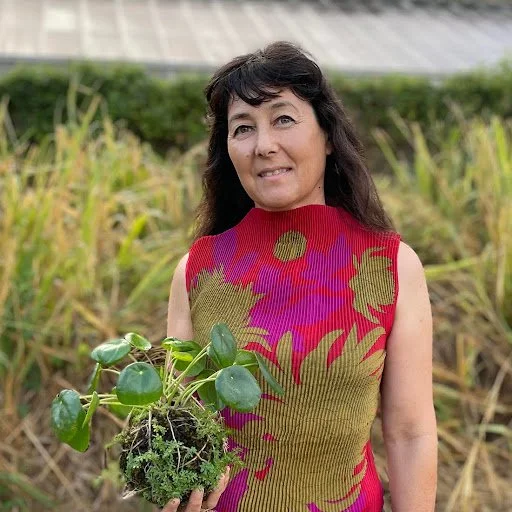By Carolyn Rojsutivat, Amy McKee, Corinne Takara, and Kurt Takara
April is Native Hawaiian Plant Month, and as many still have Earth Day in their hearts and minds, we are happy to feature a local organization that is working to re-develop people's relationships with native plants. ‘ĀinaQuest is a wonderful example of collaboration, innovation, and ‘aina-inspired action for improved education in 21st Century society. – Amber Strong Makaiau
Hawai‘i has the most endangered species in the United States, where many plants are unique to our islands. Many take for granted the beautiful natural environment our ancestors cultivated and lived harmoniously with. This diminished plant relationship is not unique to Hawaiʻi, it is actually an aspect of modern life that is prevalent in the industrial world. The phenomenon is called “plant blindness” (an inability to see or notice the plants in one’s own environment), and it affects approximately 91.9% of the population in Hawa‘i, especially those of us who reside in urban areas and who rely on urban services rather than foraging in the environment.
At ‘ĀinaQuest, we believe the solution to plant blindness is to help people (re)develop their pilina (relationships) with the natural world by meeting the community where they are at. We are a diverse team of educators, artists, technologists, and board game enthusiasts on a mission to increase community interest in plants through interactive gameplay and cultural storytelling. Our team coalesced at the Build4Good AI Hackathon hosted by Purple Mai‘a, and it was there that we developed our shared vision: to deepen our pilina with native plants. Since then, we’ve been propelled on a journey that intertwines our love for board games, plant knowledge, and community engagement. In this blog, we share how we built on previous scholarship and research, to show how storytelling, art, role-playing, and new technologies can help strengthen the pilina of keiki (children) with plants.
Our Experience: Loss of Pilina with Plants
Our involvement with this project was inspired by our own experiences with the loss of pilina between native plants and our daily lives. For example, team member Corinne Takara is a STEAM educator and community art activist whose grandmother made seed lei on Maui. Overtime, she and other seed lei artists were forced to use fake wiliwili tree seeds after watching their gradual disappearance and recent risk of extinction. With that also came a loss of mo‘olelo and story sharing. “Phrases like, ‘When the wiliwili blooms, the shark's bite’ loses its meaning when we lose our knowledge of our connection to plants in our stories,” shares Corinne.
Another example is team member Amy McKee, a Kanaka ʻŌiwi (Native Hawaiian) PhD student in Education. For Native Hawaiian Plant Month, she participated in a 30-day challenge in search of native plants in her neighborhood. She walked all over, scanning and researching plants, and it took her almost 30 days to find just one native plant. Ironically, when she did find the native plant, it was next door to her house, but she was unable to see it due to plant blindness. We knew that Corinne and Amy’s stories were not unique, and that they brought to surface a critical issue in our community: The need for increased awareness and knowledge about the native plants (or lack of native plants) surrounding us.
Collaboration: A Hackathon for Educators and Diverse Professionals
In December 2023, these two educators joined together with a diverse team of artists, technologists, and board game enthusiasts at the Build4Good AI Hackathon, hosted by Purple Mai‘a. There, out of our shared vision to deepen our pilina with native plants through interactive gameplay and cultural storytelling, ‘ĀinaQuest was born. In just 48 hours of collaboration, we designed, created, and printed our first deck of plant playing cards. The game was developed as an engaging way to learn about native plants and share stories of plants. We pictured educators using our game to nurture the next generation of locally grown Hawaiian botanists and ecologists and provide a pathway towards ʻāina-based stewardship.
Embracing the human and community-centered design ethos, the game’s strategy and design aligns with student behaviors, blending the digital and tangible worlds to create an educational experience that we believe will resonate with learners. Drawing inspiration from popular games like Pokémon Go and apps such as iNaturalist for plant identification, we combined modern technology with traditional wisdom to forge dual experiences: a tangible card game and a complementary digital app. The card game serves as a conduit for intergenerational storytelling and interaction, whether at home or in the classroom, and is designed for easy portability. The mobile app is a gateway to discovery beyond the confines of indoor spaces, and incentivizes young learners to engage with native plants in their neighborhood.
When we reflected on what we developed and our overall experience at the Purple Mai‘a AI Hackathon, what stood out was the importance of nurturing the next wave of creators and innovators with a deep understanding of the culture and community they serve. We experienced first-hand how this mutual exchange of knowledge—introducing community members to new technologies and imbuing creators with cultural and communal insights—promises a rich, reciprocal learning experience for all involved.
Next Steps: Place-Based Gameplay in Schooling
Place-based education is a pedagogical approach that nurtures students’ connection to their local environment, fostering an understanding and appreciation for its distinctive characteristics. This method goes beyond traditional classroom materials, inviting students to engage directly with their environment to deepen their grasp of various concepts. It tackles genuine community challenges, with both students and educators actively contributing to the resolution of local issues, thereby cultivating a sense of responsibility and community involvement.
In place-based learning, students are immersed in experiential activities, field excursions, and practical projects, which allows them to learn through direct action, observation, and interaction with their environment. We believe that integrating gameplay into this educational model can significantly enhance the learning experience by stimulating active participation, boosting motivation, and aiding in the acquisition of knowledge.
Gameplay within the educational sphere involves incorporating gaming elements, mechanics, and design principles to craft engaging learning experiences. It is also called digital game-based learning (DGBL). Thoughtfully crafted DGBL integrates learning material within significant challenges and real-world contexts, enabling students to link gameplay with educational goals.
The combination of gameplay and place-based education can lead to serious location-based games (SLGs). These games leverage the locational capabilities of mobile technology to impart implicit knowledge about spatial awareness, community building, and social interactions through navigational and community-engaging activities. They transcend conventional instructional models, striving to provide genuine, context-rich learning experiences that underscore tacit and informal learning.
'ĀinaQuest accomplishes the unique objective of merging gameplay with place-based education by utilizing mo‘olelo and art to foster pilina with indigenous flora in the local community. The card game’s mechanics promote reciprocity and collaboration, rooted in Hawaiian cultural principles. Players take photos of plants with their phones and use the app to identify them as native, canoe, or invasive. The app displays plant character art using generative AI, it provides facts about the plant, and it allows the community to share plant mo‘olelo. The app uses an open source plant identification API and data sets to display plant statistics and identification, and ChatGPT-4’s API to generate AI art and plant mo‘olelo using prompt engineering.
At this stage in our team’s collaborative efforts, we are curious to see how educators can use 'ĀinaQuest to support the work they do with students in a variety of educational settings.
The Future: ‘ĀinaQuest as a Place-Based Gameplay in the Education Setting
Looking ahead, we aim to reintegrate our ideas within the community, seeking their active participation. We’re organizing a workshop with cultural practitioners, ecologists, and community stakeholders to gather insights that will shape the artwork and mo‘olelo we incorporate. The insights and feedback from this collaborative session will guide us in commissioning a Native Hawaiian artist, deeply rooted in ‘āina (the land), gameplay, and creativity, to bring our visual and narrative elements to life.
For decades, traditional educational materials such as textbooks, PowerPoint slides, and videos have been foundational in many teaching settings. Yet, as progressive educators know, these resources can have their shortcomings. For example, textbooks often deliver content in a standardized manner that doesn’t accommodate diverse learning preferences. PowerPoint presentations can lead to a more passive learning experience, causing students to lose interest, and they might gloss over complexities to conform to the slide’s constraints. Videos, while informative, can sometimes offer minimal interactivity, which is crucial for thorough comprehension and engagement; poorly produced or irrelevant videos can detract from the learning process rather than enhance it.
'ĀinaQuest is envisioned as a dynamic educational tool that integrates place-based gameplay, offering an immersive and context-rich learning experience that is intimately tied to our community, culture, and the natural environment. The card game invites students to discover native plants within any setting—be it the classroom, home, or elsewhere—while the mobile app reinforces this learning by prompting outdoor exploration and interaction with the local flora. This approach not only educates students about the environment but also imbues them with cultural knowledge.
As we make our way into the future, our team is excited to see how 'ĀinaQuest–a 21st Century place-based resource developed during a 48 hour AI Hackathon by a team of diverse stakeholders–can be used by educators to sustain native plants and help the next generation of learners (re)develop their pilina (relationships) with the natural world. And while National Native Plant Month is almost over, it’s not too late to get involved. We hope this introduction to our project inspires your own outreach to like-minded collaborators for innovation and action, and that you’ll visit us online at ainaquest.com, or follow us on Instagram @ainaquest for more updates and the latest news on our game development.
ABOUT THE ContributorS:
Carolyn Rojsutivat is a co-founder of 'ĀinaQuest, UX Engineer, Product Designer, and Changemaker, who advocates for diversity and inclusion in tech, and is committed to breaking barriers and improving people’s lives. Carolyn’s research and design interests center around leveraging technology with traditional wisdom for social good, education, and conservation.
Amy McKee is a co-founder of ‘ĀinaQuest and a Kanaka ʻŌiwi (Native Hawaiian) PhD student in Education from Kaimukī, Oʻahu, Hawaiʻi. Amy is passionate about learning about ʻāina (land) and kai (ocean) based knowledge, and bridging the gap between ancestral and modern technologies.
Corinne Takara is a co-founder of ‘ĀinaQuest, STEAM educator, and community art activist, who creates technology integrated art projects. Corinne’s public collaborative work explores the use of modern day artifacts to preserve cultural heritage and memory, and honors the colliding and merging stories that arise in rapidly shifting communities.
Kurt Takara is a co-founder of ‘ĀinaQuest and a product marketing professional in the technology industry. Kurt has held various roles that span international sales, product management, and project leadership to consistently drive growth and innovation.











